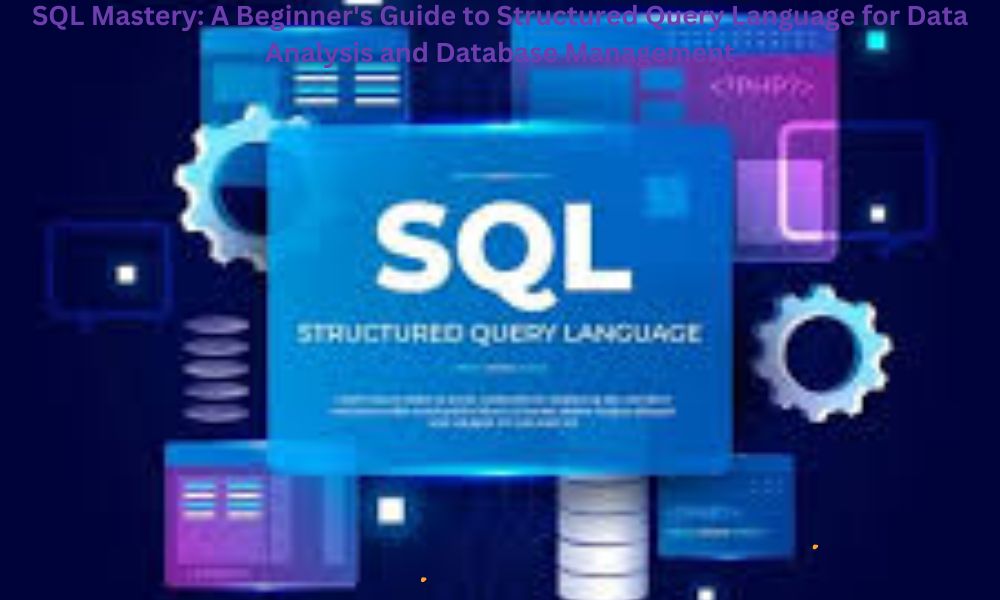SQL Mastery: A Beginner’s Guide to Structured Query Language for Data Analysis and Database Management
Unlock the power of SQL with this comprehensive beginner’s guide.
From basic queries to advanced database manipulation, this article covers the fundamentals needed for effective data analysis and database management.
SQL, or Structured Query Language, serves as the backbone for managing and analyzing data in relational databases. As a beginner, understanding the basics is crucial for harnessing the full potential of SQL. Let’s delve into the essential aspects that will empower you to master this powerful language.
Table of Contents
Understanding SQL Basics
SQL operates on the principle of structured data management. In the realm of databases, understanding key components such as tables, rows, columns, and relationships is fundamental. A well-structured database ensures efficient data retrieval and management.
Getting Started with SQL Queries
To harness the power of SQL, you need to grasp the basic syntax of queries. Selecting data from a single table and applying filters using the WHERE clause are foundational skills. Let’s explore these concepts through practical examples.
-- Basic SELECT statement
SELECT column1, column2
FROM table
WHERE condition;Advanced SQL Queries
As you progress, delving into advanced SQL concepts becomes essential. Joins enable the combination of data from multiple tables, while GROUP BY and HAVING clauses facilitate effective data aggregation and filtering. Subqueries add a layer of complexity to your queries, allowing for more intricate data retrieval.
-- Example of a JOIN
SELECT orders.order_id, customers.customer_name
FROM orders
JOIN customers ON orders.customer_id = customers.customer_id;Data Analysis with SQL
SQL isn’t just about managing data; it’s a powerful tool for analysis. Learn to leverage statistical functions, aggregate functions, and real-world case studies to extract valuable insights from your datasets.
-- Calculating average order value
SELECT AVG(order_amount) as average_order_value
FROM orders;Database Management Essentials
Creating and modifying tables, indexing for improved query performance, and understanding transactions and ACID properties are crucial aspects of effective database management. Let’s explore each of these elements in detail.
Creating and Modifying Tables
The foundation of a well-organized database lies in its structure. Learn how to create and modify tables to suit the specific needs of your data.
-- Creating a table
CREATE TABLE employees (
employee_id INT PRIMARY KEY,
employee_name VARCHAR(50),
department_id INT
);Indexing for Improved Performance
Optimizing your database includes the use of indexes. These structures enhance query speed by facilitating quick data retrieval.
-- Creating an index
CREATE INDEX idx_employee_name ON employees(employee_name);Transactions and ACID Properties
Maintaining data consistency is paramount. Explore how transactions and ACID properties ensure that your database remains reliable even in the face of errors or failures.
Best Practices for Efficient SQL Queries
Optimizing SQL queries is an art. Uncover strategies for enhancing speed, efficiency, and code maintainability. Learn to avoid common pitfalls that can hinder your database performance.
-- Efficient query using WHERE clause
SELECT * FROM products
WHERE category = 'Electronics'
AND price < 100;Practical Applications of SQL
SQL’s versatility extends beyond the realm of data management. Discover real-world examples showcasing its diverse applications in various industries. Understand how possessing SQL skills can elevate your profile in the job market.
Resources for Further Learning
To continue your journey in SQL mastery, explore recommended books, online courses, and engage in community forums. Networking with fellow SQL enthusiasts and experts can provide valuable insights and support.
A Deeper Dive: FAQ Section
How can I improve the performance of my SQL queries?
A: Utilize indexes, optimize your queries, and ensure your database is properly normalized. Regularly monitor and analyze query execution plans for further enhancements.
What are the essential statistical functions in SQL for data analysis?
A: SQL offers various statistical functions like AVG, SUM, COUNT, and MAX. These functions allow you to derive meaningful insights from your data, aiding in comprehensive analysis.
Why is database normalization important?
A: Normalization minimizes data redundancy and dependency, enhancing data integrity. It ensures that your database is well-organized, making it easier to manage and maintain.
How do I handle errors in SQL transactions?
A: Implement error-handling mechanisms such as TRY…CATCH blocks. This ensures graceful handling of errors, maintaining the integrity of your database.
Are there specific industries where SQL skills are particularly valued?
A: SQL skills are highly valued across various industries, including finance, healthcare, marketing, and e-commerce. The ability to manage and analyze data is a universal requirement in today’s data-driven world.
Conclusion
Empowered with a solid understanding of SQL basics, advanced queries, and database management essentials, you’re well on your way to mastering this invaluable skill. As you continue your journey, remember that SQL is not just a language; it’s a gateway to unlocking the potential of data for informed decision-making. Keep querying, keep learning, and watch your data management prowess grow.


